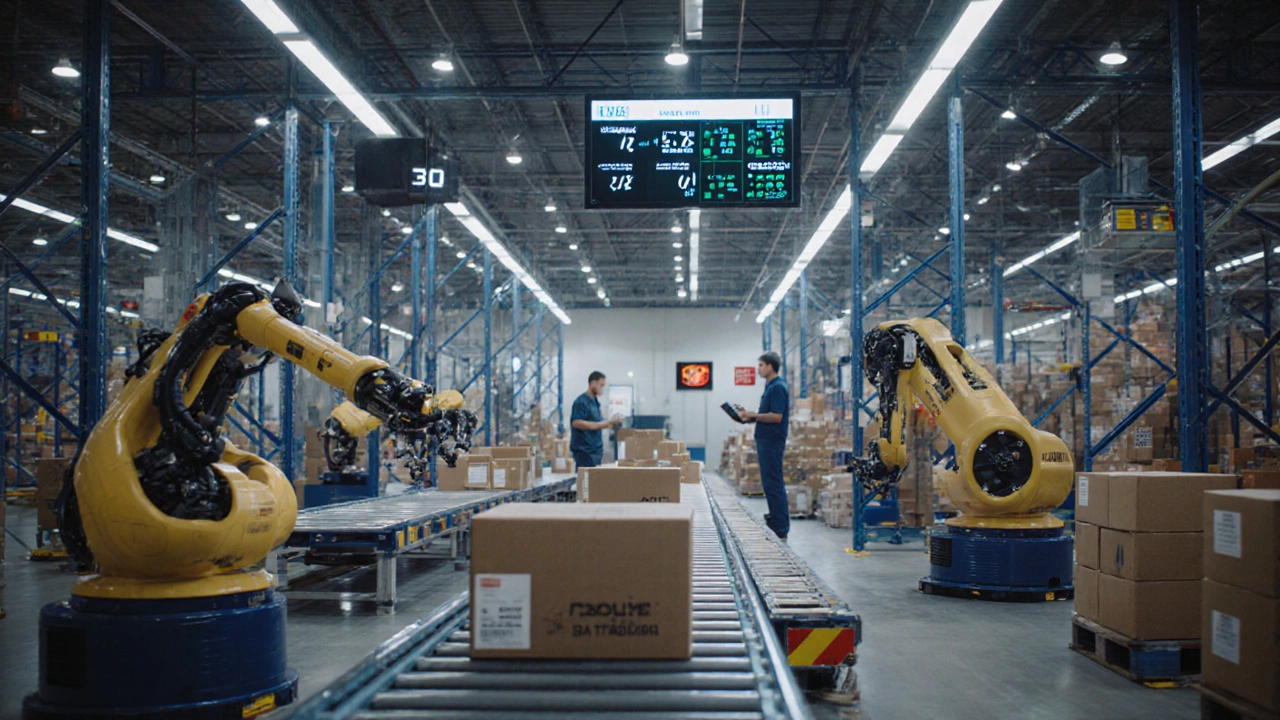Warehouse Management: Simple Steps to Streamline Your Operations
Running a warehouse feels like juggling boxes, staff, and deadlines at once. The good news? A few targeted tweaks can cut chaos and boost speed without a massive overhaul. Below are hands‑on ideas you can start using today.
1. Optimize Your Layout for Flow
First thing’s first – look at how things move inside. If pickers walk back and forth across the floor, you’re adding minutes to every order. Try grouping fast‑moving SKUs near the packing stations and placing slower items farther away. Mark clear aisles with paint or tape, and keep high‑traffic routes free of pallets. When the layout mirrors the order‑picking pattern, you shave off time and reduce accidents.
2. Use a Simple Digital System
Even a basic inventory app beats pen‑and‑paper mistakes. Scan barcodes as items arrive, move, or ship, and let the system update stock levels in real time. This cuts “out‑of‑stock” surprises and helps you spot discrepancies before they turn into costly returns. Many cloud‑based tools offer dashboards that show which products are moving fastest, so you can adjust replenishment on the fly.
Another quick win is setting up alerts for low‑stock thresholds. When a product dips below a set level, the system sends a notification, prompting a reorder before you run out. No more frantic phone calls to suppliers at the last minute.
3. Standardize Picking Procedures
Give each picker a clear, repeatable process: grab a handheld scanner, follow the pick list, verify the SKU, and place the item in the designated bin. When everyone follows the same steps, errors drop dramatically. Add a short “check‑off” in the software so the picker confirms each item before moving on – that single extra click catches most mismatches.
Consider a “batch pick” approach for similar orders. Instead of handling each order separately, group orders that share items, pick them together, then sort at the packing station. This reduces travel distance and speeds up overall throughput.
4. Keep the Floor Clean and Safe
Messy floors are more than an eyesore; they’re a safety hazard and a productivity drain. Assign a quick “end‑of‑shift tidy‑up” routine: put stray boxes back, sweep aisles, and check for spills. A tidy environment also makes it easier for new staff to find their way, cutting training time.
5. Train and Empower Staff
People are your biggest asset. Run short, focused training sessions each week – one on barcode scanning accuracy, another on safe lifting techniques. Encourage staff to suggest improvements; they see the floor daily and often spot bottlenecks you miss.
Reward ideas that lead to measurable gains, like a 5% reduction in pick time or fewer damaged parcels. When employees feel heard, morale rises and turnover drops, which in turn keeps your warehouse humming.
By tweaking layout, embracing simple tech, standardizing picks, keeping the space tidy, and investing in people, you’ll notice faster order fulfillment, fewer mistakes, and happier customers. Start with the change that feels easiest for your team, track the results, and build from there. Your warehouse can run like a well‑oiled machine without a massive budget – just a bit of smart thinking and consistent action.
Key Processes in E-Commerce Logistics You Can't Ignore
Discover the seven essential processes that power successful e-commerce logistics, from order fulfillment to last-mile delivery, and learn how to optimize them for speed, accuracy, and customer satisfaction.
WMS vs ERP Systems: What's the Real Difference for Warehouses?
WMS and ERP systems might sound similar, but they're built for different jobs in the warehouse world. This article breaks down how each system works, where the overlap is, and where you need one over the other. Get clear examples and straight answers about their main features. Learn the common mistakes people make when choosing between the two. Pick the best software to keep your warehouse humming smoothly.
Logistics Software: What Do Companies Really Use?
Logistics runs on software, but not every system does the same thing. From warehouse management to route planning, the right tools can make or break how goods move. This article breaks down the main categories of logistics software, what they actually do, and why choosing the right stack can save money and headaches. You'll find practical tips and industry examples that make complex tech decisions a bit less intimidating. Perfect for anyone who's new to logistics or just wants to know how companies keep up with today’s shipping chaos.
Logistics System Example: How Modern Software Keeps Packages Moving
Wondering what a logistics system looks like in action? This article explains a real-life example: how logistics software manages the journey of orders from warehouses straight to your doorstep. You'll see how inventory updates, delivery tracking, and coordination between drivers and warehouses all rely on smart software. Expect practical tips, real-world applications, and a behind-the-scenes look at what keeps modern supply chains running smoothly. Perfect if you’re curious about the nuts and bolts of logistics tech.
Logistics Platforms: How Modern Software Transforms Shipping and Delivery
Logistics platforms are the backbone of modern supply chains, helping companies track shipments, manage warehouses, and automate deliveries. This article breaks down what logistics platforms are, why they matter, and how they're changing the way products move from factory to customer. You'll get a real-world look at the features that power these platforms and tips for picking the right one for your business. Understand the latest trends and learn how to avoid costly mistakes. Find out which tools can make your daily operations faster, cheaper, and more reliable.
Exploring Four Key Types of Warehouse Management Systems
Warehouse Management Systems (WMS) are crucial in modern supply chain operations. They help manage inventory, optimize space, and increase operational efficiency. The four primary types of WMS are standalone, as part of an enterprise resource planning (ERP) system, supply chain execution modules, and cloud-based systems. Each type has its unique features and benefits, catering to different organizational needs. Understanding these can aid businesses in selecting the right system for efficient warehouse operations.
Does Amazon Use SAP for Its Warehouse Management?
Amazon, known for its extensive and efficient logistics network, has a complex relationship with SAP, a leading enterprise software provider. The role of SAP in Amazon's warehouse operations sheds light on how technology influences inventory management, order processing, and logistics. By understanding whether Amazon continues to employ SAP solutions, one grasps how leading companies harness software to streamline their supply chains. This article looks into the synergy between Amazon and SAP and explores its impact on the efficiency of Amazon's warehouses.
© 2025. All rights reserved.







